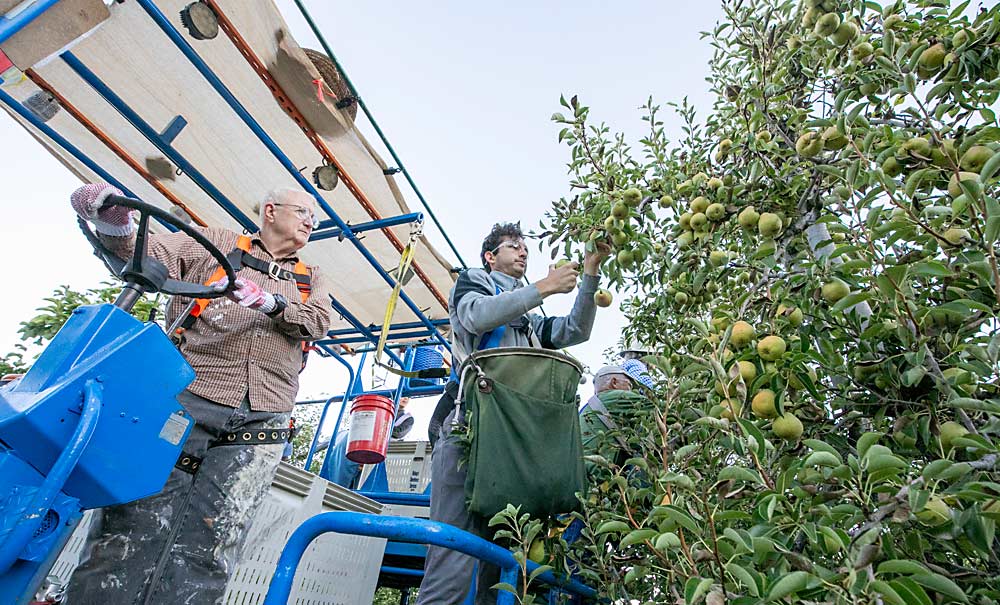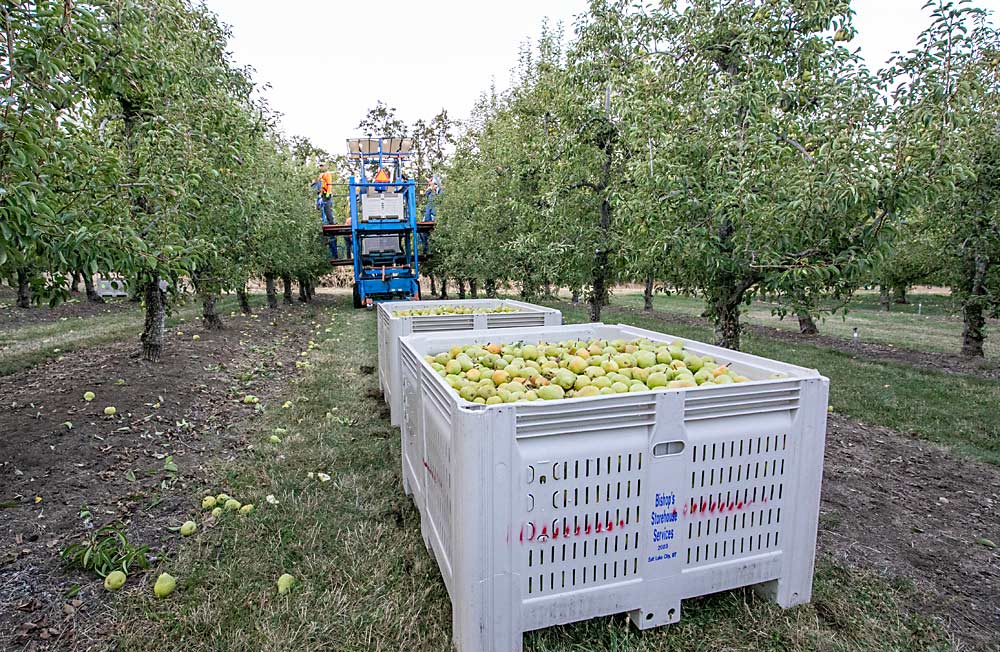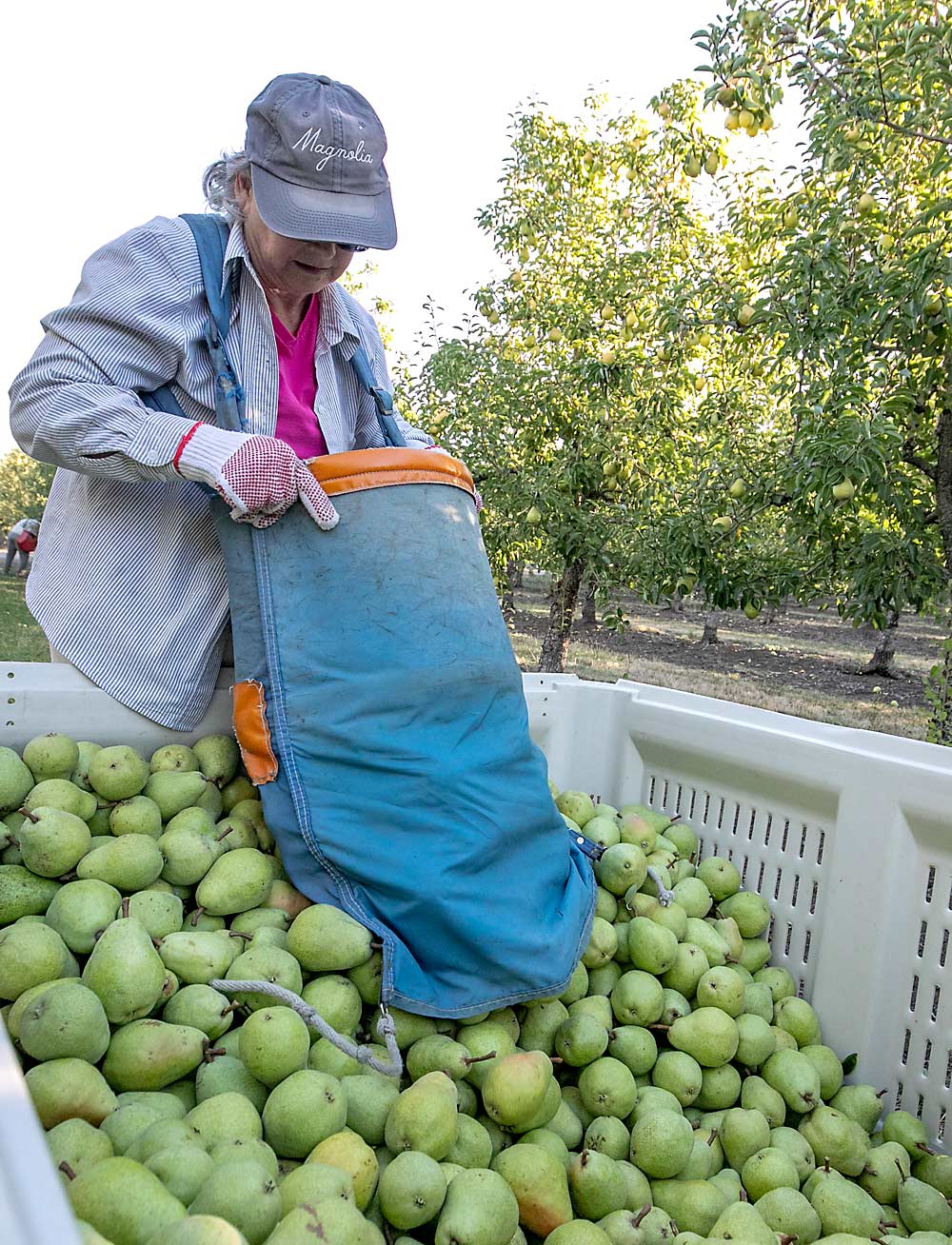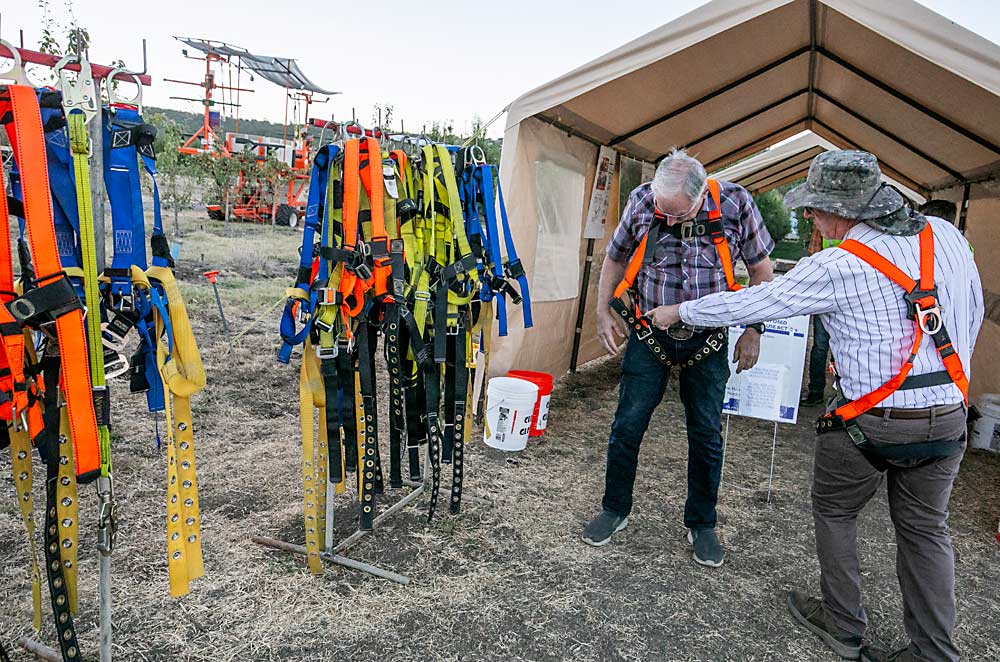
How many volunteers does it take to pick 2 million pounds of pears?
It’s not a trick question.
It takes about 22,800 volunteer hours, according to Mark Pedersen, the communications director for the Medford Stake of the Church of Jesus Christ of Latter-day Saints. He knows precisely, because dialing in the details enables the church to successfully run a commercial-scale harvest across 58 acres with youth groups, retirees and professionals “who will come from 4 to 6 a.m., before we go to work,” he said.
Two platforms, equipped with lights, allow shifts of volunteers to work from 4 a.m. to midnight, while ground crews pick during daylight hours. When Good Fruit Grower visited one early morning last September, a Blueline platform carried six pickers and a driver — all volunteers. So were the forklift operators loading bins and the truck drivers hauling the fruit. Volunteers also staffed the check-in station, making sure people signed in for their shifts, headed to the right rows and were properly outfitted with platform harnesses or picking bags.
That might sound like a training and safety challenge, but it’s one the volunteer community — drawn from Latter-day Saints congregations across southern Oregon — takes seriously in their work to provide food for families in need.

“It’s not just feeding our church people, it’s feeding other countries that are in famines or fires. The church has a massive humanitarian aid system, and this is just a little tiny part of the bigger picture,” said Dave Layer, a retired dentist from Central Point, Oregon, who served as the farm’s safety officer for the past several years. The farm, part of the Church of Jesus Christ of Latter-day Saints’ welfare system, sends its pears to a church-owned cannery in Caldwell, Idaho.
In his role as safety officer, Layer regularly invited the Occupational Safety and Health Administration to inspect the volunteer-run harvest operation to ensure its compliance and that the volunteers who donate their time are safe and effective on the job. This year, Layer trained to be a tractor driver, which involves preharvest practicums in addition to the training videos the orchard website hosts for every job, from proper pear picking technique to putting on a harness for platform work.
Because many volunteers come back for years or decades, they are trained, “professional volunteers,” he added.
The orchard has only two full-time employees, a farm manager and assistant, who manage pests and irrigation and track fruit development, said John Clason, the Medford Stake president. Harvest timing, like any pear orchard, depends on monitoring the pressures of the ripening fruit in each block. That means the volunteers must be organized and ready to launch when the fruit is ready.

“One of the challenges is getting geared up but not having a huge amount of notice, but it’s something we roll with every year,” Clason said. “We use the church’s established communication structure to manage and organize thousands of people.”
Each stake — a local group of church congregations — in the region takes responsibility for a block throughout the year. Volunteers from Medford, Central Point, Grants Pass, Klamath Falls and Roseburg all organize workdays to prune or rake or pull suckers.
Working in the orchard creates a way to reconnect with those who may have moved to other towns but still come back every year for harvest, Layer said, and to connect with people from the community they wouldn’t see in daily life.
“Years ago, a young man who was in our scout group and I were on the tall ladders, way up in the trees picking, and the sun was going down and it was about 100 degrees, and we had this really cool conversation because we were involved in the same effort, even though a generation or two separated us,” Layer recalled.
Local volunteers even get the call to come out when frost is forecast.
Pedersen recalled one memorable winter night he came out to light smudge pots across the orchard. “A cloud came in to hold the heat,” and it felt like a little orchard miracle, he said.

The 2022 harvest itself falls into a similar category. Dire drought conditions left the region just five weeks of irrigation water, but wet spring conditions allowed irrigation districts to hold off delivery so that water could stretch until mid-August and see the Bartlett crop across the finish line.
Thousands of people take shifts in the orchard during the three weeks or so of harvest, Clason said, including church members, their friends and colleagues from their communities who want to support the effort.
“The presence of the church and its leadership structure is what makes this possible,” Clason said. “It’s part of our culture to get out there and serve, and we view this orchard as part of our stewardship. It’s a bit of a sacrifice to donate these labor hours, but people do it joyfully.”
—by Kate Prengaman






Leave A Comment